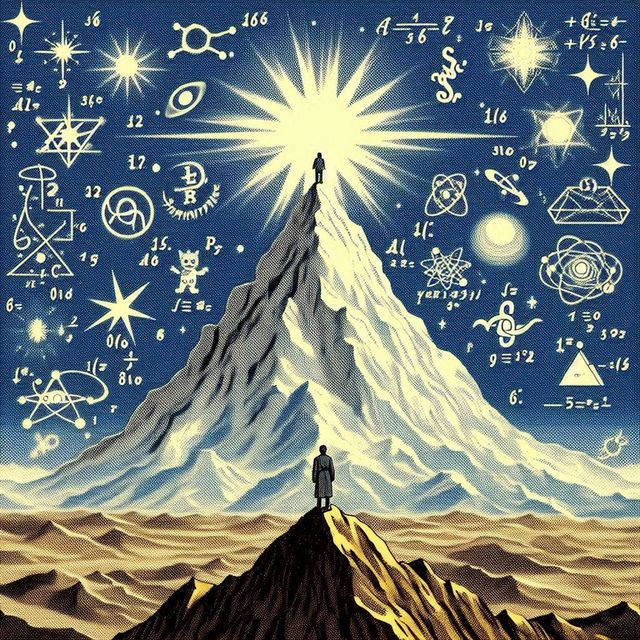-
Vijay Fafat
- Published on
This story had so much promise in its premise and the imaginative idea at its base that I was very disappointed by the actual execution of it. To posit such a grand idea as that of an astral soul heading for a destination which is a putative “finis” of Mathematics itself - the concept of “Absolute Infinity” - and then to have the narrative just fracture and fizzle out into some puerile slam-bang-wham ending with basic errors is a severe let-down. Certainly for someone of Rudy Rucker’s caliber, who wrote the brilliant book called “Infinity and the Human Mind”. “White Light” had the imaginative potential to be a mini “Divine Comedy”, going through Circles of Infinity, but did not even aim at that.
A set theorist, Felix Rayman, has the ability to project his astral body out of his corporeal self. In one such moment of ectoplasmic detachment, Jesus Christ (!) sends him on a journey to save the soul of one deceased woman, Kathy. His mission is to take with him Kathy’s soul to the top of “Mount On” located in “Cimon”, a place of fantasy infinitely far away and yet, right next to every point in the real universe. Mount On is the mountain, a ziggurat, of the uncountably many infinities appearing as a landscape, with its own whackily fluctuating gravitational field. Reaching its top leads to a merger with “God” (though to do this, you have to be able to become, or merge with, “white light”, a trans-aleph mode of movement up Mount On). Along this journey, Felix discovers Dreamland, lives in the classic “Hilbert Hotel”, meets Einstein and David Hilbert in a cafe laid out as an inverse Poincare disk, finds a way to “speed-up” so that he can execute super-tasks requiring infinitely-many (“aleph null”) steps, explores a meadow with infinitely branching grasses, discusses a potential proof of the Continuum Hypothesis by comparing the aleph-1 cliffs of Mount On with the pages of a book comprising “c” number of pages (the conclusion of that discussion is incorrect, IMO), etc..
So far, so good. Makes for very imaginative reading. But then, in very typical Rucker style which can be seen in many of his other novels, he veers off into needless and bizarre sexual situations which are childish and senseless (in the present instance, sex with an inflatable human rolling eyes), and from there, some complete gibberish about car chases, “Godsquad” hit mobs, etc. What could have shaped up as a truly transcendental exposition in the manner of Olaf Stapeldon’s “Star Maker”, with a fantastic vision of the complex reality embodied by the higher alephs and an encounter with some exalted divinity, “White Light” just crumples up into a very mediocre, nonsensical ending. Felix returns to his body on Earth and chases an idea given by Cantor - a physical proof of the Continuum Hypothesis (CH). He ends up creating “Hyper-matter” by capturing drifting soul-matter / “bloogs” and concentrating their essence. Felix just assumes that hyper-matter is uncountably infinitely finer than “aether”, which itself is infinitely finer than ordinary matter (and also assumed to be divisible to aleph-1 level). Therefore, hyper-matter must be at least aleph-2 divisible, thereby proving the Continuum Hypothesis to be false (in our universe) since the cardinality of space is that of real numbers. Complete non sequiter and a proof by assumption. There are further issues with this rushed ending. The hyper-matter ball has inertial mass but no gravitational mass and hence, just floats in the air because “gravitational field does not affect it at all”. And yet, the ball continues to swing around the sun along with earth in that room of Felix… The hyper-matter is supposed to be superconducting even though it consists of no electrons or any other normal matter. It also feels the electromagnetic force like an ordinary ball of matter, for it bounces off of a wall. Really, with no atoms?
By the end of it, the whole thing devolves into such nonsense that on the last few pages, where Felix casually describes meeting God and throwing out the hint that both God and His Creation are being powered by some higher energy drawn from a manhole, a valid reaction is, “Whatever!”.
